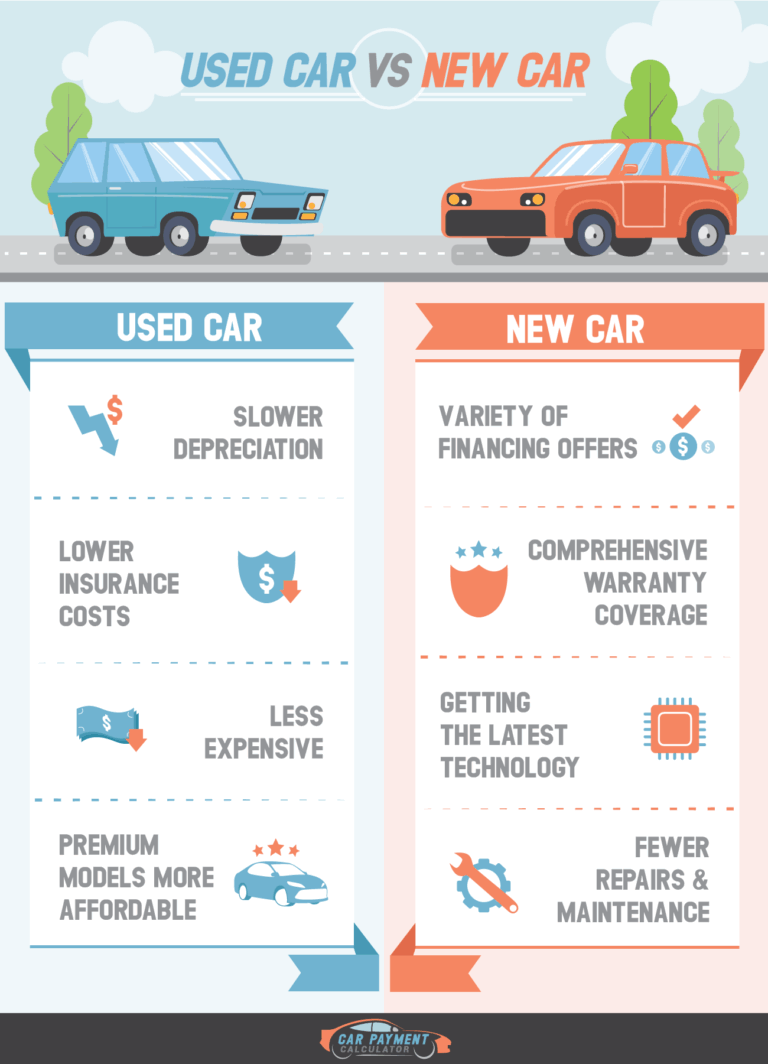South Korean Car Brands: From Humble Beginnings to Global Powerhouses
South Korean Car Brands: From Humble Beginnings to Global Powerhouses cars.truckstrend.com
In the vast and competitive landscape of the global automotive industry, few narratives are as compelling as the meteoric rise of South Korean car brands. What began as an nascent industry focused on assembling foreign models has, in a relatively short span, transformed into a formidable force, producing some of the most innovative, reliable, and design-forward vehicles on the planet. Today, South Korean car brands are synonymous with cutting-edge technology, striking aesthetics, excellent value, and a relentless pursuit of future mobility solutions. This article delves into the fascinating world of South Korean automobiles, exploring their journey, key players, defining characteristics, and what the future holds.
The Genesis of an Automotive Nation: A Brief History
South Korean Car Brands: From Humble Beginnings to Global Powerhouses
South Korea’s automotive journey began in the 1960s with companies like Hyundai and Kia initially assembling foreign vehicles under license. The focus was on meeting domestic demand and building foundational manufacturing capabilities. The government played a crucial role, implementing policies that encouraged local content and export-oriented growth.
The 1980s marked a turning point, with South Korean manufacturers beginning to design and produce their own models, often focusing on affordability and practicality for emerging markets. The 1997 Asian financial crisis, while devastating, paradoxically accelerated consolidation and forced a strategic re-evaluation, leading to Hyundai’s acquisition of Kia and the formation of the Hyundai Motor Group. This consolidation proved to be a catalyst, allowing the group to pool resources, streamline R&D, and invest heavily in quality and design.
The 21st century has seen an unprecedented surge in quality, technology, and design prowess. South Korean brands shed their "budget car" image, embracing global design talent, advanced engineering, and a focus on premium features and robust warranties. Today, they stand shoulder-to-shoulder with established automotive giants from Europe, Japan, and America.
The Major Players: Pillars of the South Korean Automotive Industry
The South Korean automotive landscape is dominated by a few key players, each with its unique identity and market positioning:
1. Hyundai Motor Company
As the flagship brand of the Hyundai Motor Group, Hyundai has emerged as a global automotive powerhouse. Known for its ambitious vision and rapid innovation, Hyundai has successfully transitioned from a value-driven brand to one recognized for its sophisticated design, advanced technology, and comprehensive model lineup.
- Key Characteristics:
- Fluidic Sculpture Design: Pioneered a distinctive design language that emphasizes flowing lines and dynamic forms.
- Technological Leadership: At the forefront of electric vehicles (EVs) with its Ioniq sub-brand, and hydrogen fuel cell technology (Nexo). Also invests heavily in autonomous driving and urban air mobility.
- Diverse Portfolio: Offers a wide range of vehicles, from compact sedans (Elantra) and SUVs (Tucson, Santa Fe) to luxury sedans (Sonata) and performance N-models.
- Strong Warranty: Often offers one of the best warranties in the industry, underscoring confidence in its quality.

- Notable Models: Elantra, Sonata, Tucson, Santa Fe, Palisade, Ioniq 5, Ioniq 6, Kona Electric.

2. Kia Corporation

A sister brand to Hyundai within the Hyundai Motor Group, Kia has carved out its own niche with a focus on youthful design, sportiness, and exceptional value. Under the design leadership of Peter Schreyer (who previously worked for Audi), Kia’s vehicles underwent a dramatic transformation, becoming highly appealing and stylish.
- Key Characteristics:
- Design-Driven: Known for its bold, distinctive designs, often featuring the signature "Tiger Nose" grille.
- Sporty & Engaging: Many Kia models offer a more dynamic driving experience compared to their Hyundai counterparts.
- Value Proposition: Combines modern features, good build quality, and competitive pricing, often with excellent standard equipment.
- EV Expansion: Rapidly expanding its EV lineup with critically acclaimed models like the EV6 and EV9.
- Notable Models: Forte, K5, Sportage, Sorento, Telluride, Carnival, EV6, EV9.
3. Genesis
Launched in 2015 as Hyundai’s dedicated luxury brand, Genesis has quickly established itself as a formidable competitor to established European and Japanese premium marques. Genesis aims to deliver a refined driving experience, exquisite design, and a high level of personalized customer service.
- Key Characteristics:
- "Athletic Elegance" Design: Characterized by distinctive quad-lamp headlights and taillights, parabolic lines, and a focus on minimalist yet luxurious interiors.
- Premium Materials & Craftsmanship: Interiors feature high-quality leather, real wood, and metal accents, creating a sophisticated ambiance.
- Advanced Technology: Equipped with cutting-edge infotainment systems, advanced driver-assistance systems (ADAS), and robust powertrains.
- Customer-Centric Approach: Often includes perks like complimentary scheduled maintenance, valet services, and an emphasis on the overall ownership experience.
- Notable Models: G70, G80, G90 (sedans), GV60, GV70, GV80 (SUVs).
4. KG Mobility (formerly SsangYong Motor Company)
Historically known for its robust, often quirky, SUVs and utility vehicles, SsangYong faced significant financial challenges over the years. Rebranded as KG Mobility in 2023 after being acquired by the KG Group, the company is undergoing a revitalization with a renewed focus on electric vehicles and a more modern design language.
- Key Characteristics:
- SUV Specialization: Traditionally focused on body-on-frame SUVs and MPVs, known for their ruggedness.
- Value-Oriented Off-Road Capability: Offers capable off-roaders at a more accessible price point.
- Undergoing Transformation: The KG Mobility era aims for a shift towards electrified and future-proof vehicles.
- Notable Models: Torres, Rexton, Korando.
5. Renault Korea Motors
A joint venture between Renault and Samsung Group, Renault Korea Motors primarily serves the domestic market and some export regions under the Renault Samsung Motors brand. It leverages Renault’s global platforms and technology while tailoring vehicles for the Korean market.
- Key Characteristics:
- European Influence: Benefits from Renault’s design and engineering expertise.
- Focus on Domestic Market: Strong presence in South Korea, adapting global models.
- Technological Integration: Incorporates Renault’s infotainment and powertrain technologies.
- Notable Models: QM6 (Koleos), XM3 (Arkana).
6. GM Korea
Operating as a subsidiary of General Motors, GM Korea produces and distributes Chevrolet, Cadillac, and GMC vehicles for the domestic and export markets. It plays a crucial role in GM’s global manufacturing strategy, particularly for smaller and mid-sized vehicles.
- Key Characteristics:
- Global Platforms: Manufactures vehicles based on GM’s global platforms.
- Export Hub: Significant portion of its production is for export to various countries.
- Chevrolet Focus: Primary brand for mass-market vehicles.
- Notable Models: Trax, Trailblazer.
Defining Characteristics and Strengths
South Korean car brands, particularly Hyundai and Kia, share several defining characteristics that have contributed to their global success:
- Exceptional Value for Money: Historically, South Korean cars offered more features and technology for their price point compared to competitors. While prices have risen with quality, the value proposition remains strong.
- Rapid Technological Adoption: They are quick to integrate new technologies, from advanced infotainment systems and connectivity features to comprehensive ADAS suites and diverse powertrain options (ICE, hybrid, plug-in hybrid, EV, fuel cell).
- Striking and Evolving Design: Gone are the days of bland designs. South Korean brands have embraced bold, distinctive, and often polarizing designs that stand out in a crowded market.
- Impressive Quality and Reliability Improvements: Decades of consistent investment in manufacturing processes, quality control, and R&D have significantly boosted their perceived and actual reliability, often backed by industry-leading warranties.
- Focus on Electrification: Hyundai Motor Group is a global leader in EV development, with dedicated platforms (E-GMP) and a rapidly expanding lineup that rivals traditional EV manufacturers.
Practical Advice and Actionable Insights for Consumers
Considering a South Korean car? Here’s what you should know:
- Research Thoroughly: While overall quality is high, individual models may have specific quirks. Read reviews and check reliability ratings for the exact model and year you’re interested in.
- Prioritize Your Needs: Hyundai offers a broad range, Kia focuses on sportiness and value, and Genesis provides luxury. Match the brand’s philosophy to your personal preferences.
- Explore EV Options: If you’re considering an electric vehicle, Hyundai and Kia are at the forefront, offering compelling options with competitive range, charging speeds, and innovative features.
- Don’t Overlook Warranties: The extensive warranties offered by Hyundai and Kia (often 5-year/60,000-mile basic and 10-year/100,000-mile powertrain in the US) provide excellent peace of mind.
- Test Drive Extensively: Experience the design, technology, and driving dynamics firsthand. South Korean cars often offer a very comfortable and well-equipped interior experience.
- Consider Resale Value: As their reputation grows, so does their resale value, making them a solid long-term investment.
Challenges and Future Outlook
Despite their success, South Korean car brands face ongoing challenges:
- Intense Competition: The global automotive market is fiercely competitive, with strong players from Germany, Japan, China, and the US.
- Supply Chain Resilience: Like all automakers, they are vulnerable to global supply chain disruptions.
- Transition to Software-Defined Vehicles: The industry is moving towards vehicles that are less about hardware and more about software. Adapting quickly to this paradigm shift is crucial.
- Autonomous Driving: Developing and deploying safe and reliable autonomous driving technologies at scale remains a significant hurdle.
- EV Market Saturation & Price Wars: As more players enter the EV market, competition will intensify, potentially leading to price pressures.
However, the future looks bright. South Korean brands are well-positioned for the era of electric and autonomous mobility. Their agility, willingness to invest heavily in R&D, and commitment to bold design suggest continued innovation and global market leadership. Expect them to push boundaries in vehicle-to-grid (V2G) technology, advanced connectivity, and sustainable manufacturing practices.
Representative Price Range of South Korean Car Brands (USD)
It’s important to note that car prices vary significantly based on model, trim level, optional features, region, taxes, and current market conditions. The table below provides a representative price range for popular models/segments from each brand to offer a general idea of their market positioning. These are approximate MSRPs (Manufacturer’s Suggested Retail Price) for new vehicles and are subject to change.
| Brand | Primary Market Segment (General) | Representative Price Range (USD) | Key Models (Examples) |
|---|---|---|---|
| Hyundai | Mass Market (Economy to Premium-ish) | $20,000 – $65,000+ | Elantra, Sonata, Tucson, Santa Fe, Ioniq 5, Palisade |
| Kia | Mass Market (Value to Sporty Premium) | $20,000 – $65,000+ | Forte, K5, Sportage, Sorento, Telluride, EV6 |
| Genesis | Luxury (Premium Executive) | $40,000 – $85,000+ | G70, G80, G90, GV70, GV80, GV60 |
| KG Mobility | Niche SUV/Utility (Value-Oriented) | $30,000 – $55,000+ | Torres, Rexton, Korando |
| Renault Korea M. | Mass Market (Korean Domestic/Select Export) | $25,000 – $45,000+ | QM6 (Koleos), XM3 (Arkana) |
| GM Korea | Mass Market (Global Platforms) | $25,000 – $50,000+ | Trax, Trailblazer (Chevrolet Models) |
Disclaimer: Prices are highly variable and serve only as a general guide. Always consult official brand websites or local dealerships for the most accurate and up-to-date pricing in your region.
Frequently Asked Questions (FAQ)
Q1: Are South Korean cars reliable now?
A1: Absolutely. South Korean brands, particularly Hyundai and Kia, have made massive strides in quality and reliability over the past two decades. They consistently rank well in consumer satisfaction and reliability surveys, often comparable to or exceeding Japanese and American brands. Their comprehensive warranties also reflect their confidence in product quality.
Q2: How do South Korean luxury brands like Genesis compare to European luxury brands (BMW, Mercedes-Benz)?
A2: Genesis has quickly established itself as a credible luxury contender. They offer competitive performance, stunning design, high-quality interiors, and advanced technology at a generally more attractive price point than established German luxury brands. While they might not have the same decades of heritage, they offer a fresh, modern take on luxury with a strong focus on customer experience.
Q3: What are the main advantages of buying a South Korean car?
A3: Key advantages include excellent value for money (features for the price), bold and modern design, advanced technology (especially in infotainment and safety), strong warranties, and a rapidly expanding and competitive electric vehicle lineup.
Q4: Are South Korean car brands competitive in the electric vehicle (EV) market?
A4: Yes, highly competitive. Hyundai and Kia are considered leaders in the EV space, with dedicated platforms (like E-GMP) that allow for fast charging, impressive range, and innovative features. Models like the Hyundai Ioniq 5 and Kia EV6 have received critical acclaim and are strong contenders against EVs from any manufacturer.
Q5: What’s the difference between Hyundai and Kia, given they are part of the same group?
A5: While sharing platforms and powertrains, Hyundai and Kia maintain distinct brand identities. Hyundai often targets a broader, more mature audience with a focus on refinement, comfort, and advanced technology. Kia tends to be more youthful, design-driven, and often offers a sportier driving feel, appealing to those seeking a bolder aesthetic and dynamic experience. Genesis, of course, is positioned as the pure luxury arm.
Q6: Are parts and service readily available for South Korean cars globally?
A6: Yes. Given their massive global presence, especially for Hyundai and Kia, parts and service networks are extensive in most major markets. You should have no trouble finding authorized dealerships and service centers.
Conclusion
The journey of South Korean car brands from obscure assemblers to global automotive leaders is a testament to relentless ambition, strategic investment, and a keen understanding of evolving consumer demands. Hyundai, Kia, and Genesis, in particular, have reshaped perceptions, proving that innovation, quality, and captivating design can come from anywhere. As the industry hurtles towards an electric, connected, and autonomous future, South Korean brands are not just keeping pace; they are actively driving the transformation, cementing their status as indispensable players in the global automotive narrative. For consumers seeking a blend of cutting-edge technology, striking aesthetics, reliable performance, and compelling value, South Korean car brands offer an undeniably attractive proposition.



